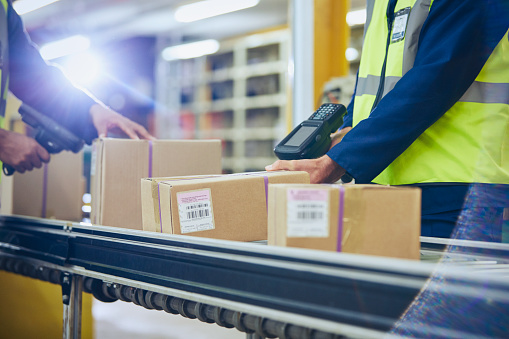How to Accelerate Your E-Commerce Strategy by Years and Get on the Path to Profitability
[ad_1]

In e-commerce, pace and buy accuracy are the key motorists of consumer satisfaction. A buyer who expects diapers to be shipped in fifty percent an hour may possibly abandon a retailer eternally right after just one messy hold off or slip-up.
Brick-and-mortar merchants that are creating out their e-commerce operations are feeling tension on several fronts. Q-commerce providers, which promise 15- or 30-moment deliveries, are heightening client expectations for nearly instantaneous deliveries.
Pace and precision are highly-priced to provide, however. And passing on the charge to shoppers is problematic. A McKinsey research found 50 % of omnichannel customers will store elsewhere when shipping occasions are also long — but only a person in 5 will take even a marginal enhance in shipping fees for more rapidly supply.
In this rock-and-a-tough place retail natural environment, the pathway to profitability must include far more precise and granular item spot information and facts within suppliers.
The Issue With Order Pickers
Just a couple many years back, a lot of merchants viewed as going some or all e-commerce buying functions out of their outlets to a micro-fulfillment heart (MFC) or a central fulfillment centre (CFC). In-retailer, they had been making sub-exceptional customer ordeals and making as well considerably targeted traffic and congestion in aisles.
Pandemic-related adjustments in purchaser habits place the brakes on that kind of thinking. Previous Black Friday, in-retailer targeted traffic was down 28.3 p.c from pre-pandemic amounts, whilst e-commerce revenue grew 11 per cent. By 2026, far more than 20 p.c of U.S. grocery gross sales are expected to be from e-commerce, double the amount right now.
Most achievement centers just take an common of four hrs to eight several hours to decide on, pack and provide an order, McKinsey identified. In-keep finding, which brings the goods nearer to the consumer, grew to become important as e-commerce surged to keep speed with consumer need and expectation of speed. .
Nonetheless, stores generally have stock precision premiums of 70 p.c to 90 % — significantly beneath the 99.5-in addition % of most distribution facilities, McKinsey established. Furthermore, in-keep picking ordinarily prices 1.5 to two periods extra on a charge-for every-choose foundation.
The best expenditure in e-commerce nowadays is the labor expense associated with purchasing for an get, frequently expressed in the sector parlance of whole “units for each hour” (UPH) that can be processed by a facility, pack-and-choose strains, and other variables.
That price tag of labor is soaring with a employee shortage which is driving wage hikes and increased healthcare charges. In addition, surging oil price ranges are bringing increased transportation expenses.
How promptly and efficiently associates can choose items in-retail outlet will establish e-commerce profitability. At Kroger, pickers are tasked to retrieve every item in just 30 seconds (120 UPH) and to uncover 95 p.c of a customer’s grocery checklist, according to a New York Moments tale.
Achieving these goals is a obstacle, as the Instances explained in the practical experience of 1 picker: “Waiting in line at the deli counter and staying stopped by buyers asking for aid would gradual him down, and he dreaded lists with seasonal goods, like Xmas treats, mainly because [he would typically be directed] to the wrong aisle. If an merchandise was out of inventory, his achievement amount was dinged.”
Out-of-stocks and errors attributable to the psychological anxiety and pressures pickers facial area also convey fees that ripple by way of the supply chain.
Much better Inventory Information
Planograms provide minor support. Because they are so pricey to produce, many huge vendors use common planograms that do not match the particularities of distinct retailers. A retailer that’s supposed to have 120 feet of drinks may perhaps, in reality, have 60 feet in one aisle and 60 ft in another aisle.
As a result, most stores currently have no plan if the product they offered to customers on the web is basically in stock in a retailer. Perpetual stock info is remarkably inaccurate. Therefore, merchants have to surface every single item in their catalogue online, an additional inefficiency in comparison to Q-commerce organizations that offer only a rationalized subset of the items offered by brick-and-mortar vendors.
The implications can be extraordinary: the regular retail affiliate spends triple the time searching for things that aren’t truly offered in-retailer, generating an sad shopper in the method.
The solution?
By leveraging fashionable technologies this kind of as artificial intelligence (AI), retailers can not only correctly determine in in the vicinity of authentic time, update their product catalogue to what’s essentially stocked at an specific keep, but also update what aisle a product is in and what distinct shelf or part it truly is in on the aisle. If an affiliate is aware a bottle of ketchup is on the third shelf from the base, and the third item on the remaining, treasured time is shaved off the picking job. UPH — and profitability — go up. Even a smaller enhancement in place precision interprets into a massive price savings for a massive business.
Lots of Likely Rewards
Savvy retailers are employing in close proximity to true-time product site data to not only improve in-retailer selecting, but to electricity guided buying visits for buyers at brick-and-mortar areas. Now consumers, also, can faucet their telephone and uncover the exact location of the merchandise they want. At Kroger, prospects can use the retailer’s application to find the aisle of a item, but not the granular area.
And when the purchaser engages with a retailer digitally, the retailer enjoys a increased share of wallet. Shoppers normally will increase to their cart goods they might have picked up at other merchants when they have been procuring at physical stores far more routinely.
Shops have taken techniques to monetize buyer loyalty info, perpetual inventory information and facts, and product sales details. Shelf info has been remaining out of the combine. Now that the pandemic has turned 10-12 months e-commerce plans into five-year and two-year designs, it’s imperative for shops to choose the following move with around real-time, remarkably precise shelf inventory info.
Filling orders signifies a large price. But vendors will have to do it or die. They must move with the shopper, but do so in a rewarding way. There has never been a time when it’s been a lot more important for shops to produce efficiencies in their picker functions — and that can only take place with additional specific product spot facts.
Mark Abernathy is head of retail at Pensa Units, a syndicated data solution that drives progress for CPG manufacturers and stores by means of accurate and actionable shelf visibility.
[ad_2]
Resource url






